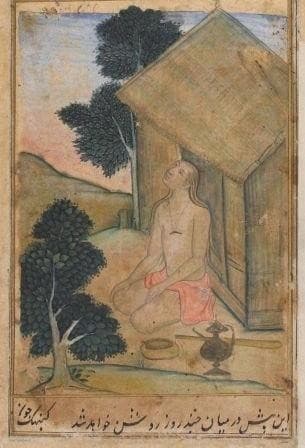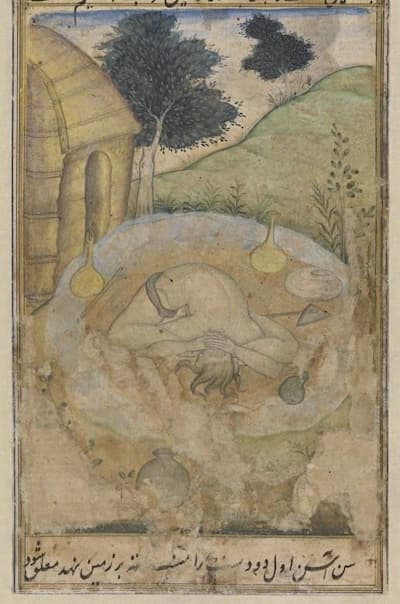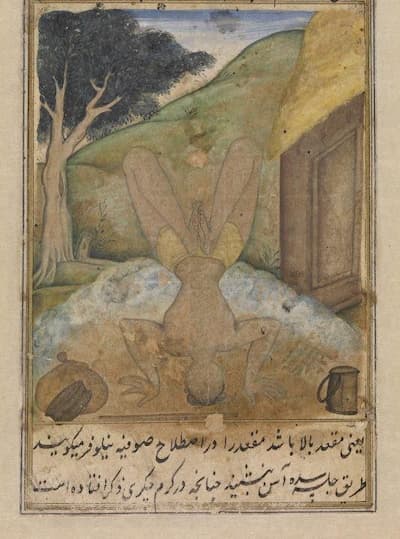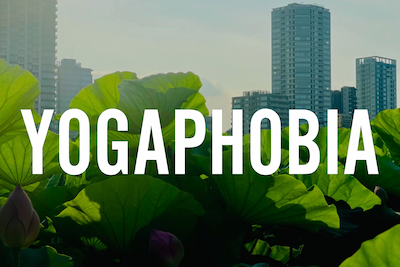· History · 1 min read
Tiktika Practice — A Morning Meditation
Explore the meditative Tiktika practice performed at dawn to connect with the cosmos and awaken the spirit.

According to its translation, this tiktika practice is performed at dawn, after ablutions (wudu), sitting facing east, and staring up into the heavens. The yogi keeps her gaze open-eyed to feel the coolness of the air, blinks them closed, and then stares back again to the sky, over-and-over until sunrise.
The earliest paintings of non-seated poses (asanas) appear in the Persian Bahr al-Hayat (Ocean of Life) manuscripts, written in Gujarat in approximately 1550 by Muhammad Ghwath Gwaliori (var. Gwaliyari).
Illustrated folio of the Bahr al-Hayat, a Persian Sufi yoga treatise.
Watercolor on Paper, 1600 - 1604, Trustees of the Chester Beatty Library, Dublin, Ireland.
Carl W. Ernst has translated the Ocean of Life from seven manuscript copies, a translation which is available at the Smithsonian, National Museum of Asian Art site.
This is a faithful photographic reproduction of a two-dimensional, public domain work of art. The work itself is in the public domain in its country of origin and other countries and areas where the copyright term is the author’s life plus 100 years or fewer.
Interested in learning more? Contact us or try a class.
Overland Park, Kansas
Almost always online, from anywhere.


